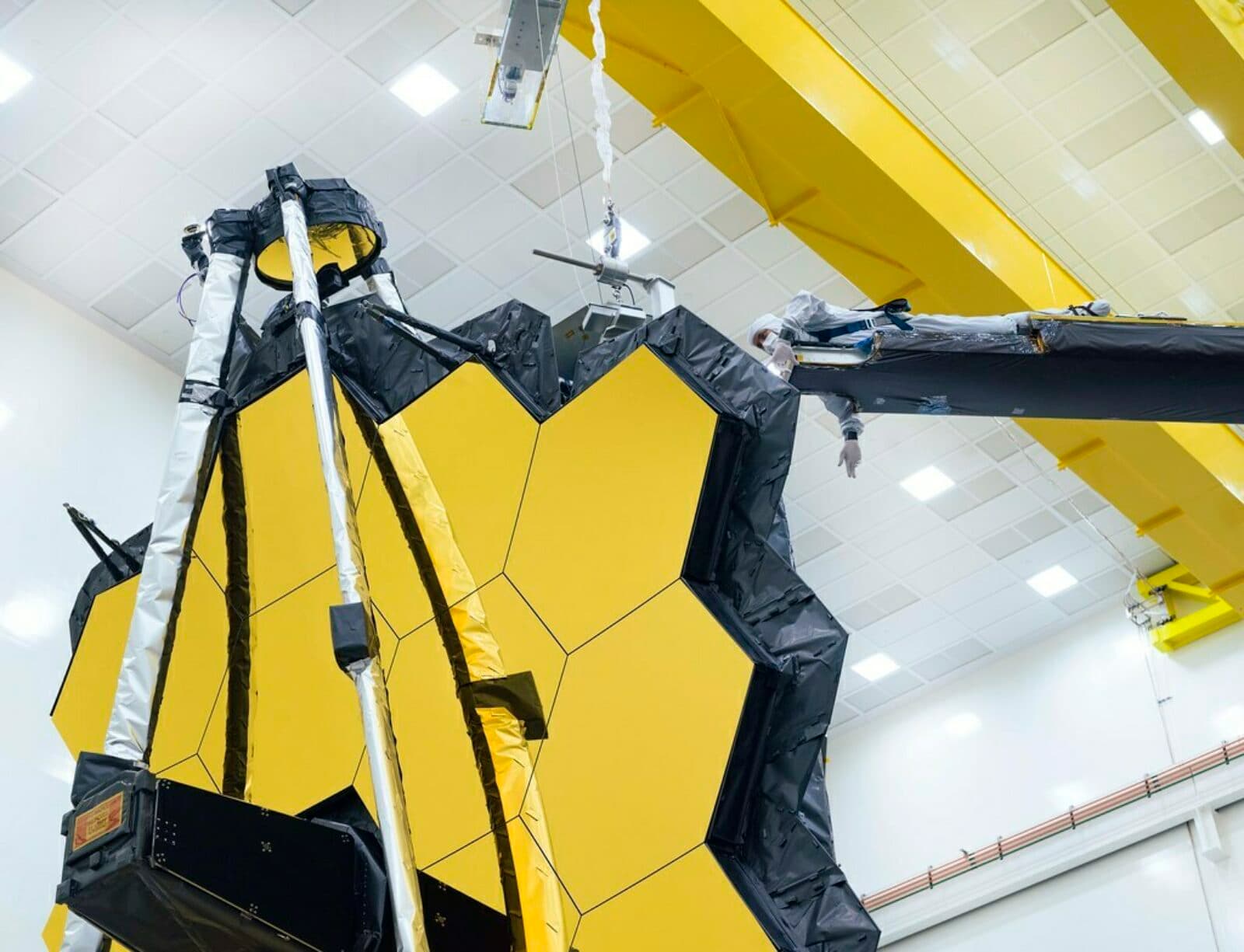Discerning the Galactic Dens Where Monster Black Holes Lurk
by Adam Hadhazy
Part 2 of our 'Looking Ahead to JWST' series explores how the next-generation telescope could reveal the stars composing the especially distant galaxies thought to host quasars

The Author
The Researcher
The next era of deep space science will begin with the launch of JWST come late 2021. Debuting a suite of new technologies to keep its instruments super-chilled, JWST will take pristine, high-resolution observations of faint infrared light, enabling novel astrophysical investigations and a farther look back than ever before into the early universe.
Earlier this year, NASA announced the telescope's first year of slated observations—dubbed Cycle 1—based on proposals submitted by researchers worldwide. Several Kavli Institute-affiliated researchers are principal or co-principal investigators for approved Cycle 1 observation programs. This article is the second in a series profiling these greenlit JWST observer programs.
Light, so to speak, ain't what it used to be. The expansion of our 13.8-billion-year-old universe has stretched out light originally emitted by stars back when the cosmos was a fledgling billion years young. That starlight, which had started out as optical light, now reaches us as longer-wavelength infrared light. Capturing this elongated light—the modus operandi of JWST—will finally allow researchers to answer a cosmic chicken-or-the-egg problem: Which came first, supermassive black holes or galaxies?
In the modern universe, supermassive black holes and galaxies are part and parcel, with monster black holes lurking in the hearts of nearly all star-filled, gleaming galaxies. In the early universe, though, we don’t know if that kinship holds, simply because we can't see galactic stars. All we can glimpse are the energetic thrashings of some supermassive black holes as they gobble up matter. These so-called quasars are like beacons on a distant shore, and we simply cannot tell what else is on that shore.
"Due to cosmic expansion, all of the interesting optical signatures that we usually have to study galaxies are redshifted from the optical to the near-infrared for the most distant galaxies and quasars, with the added challenge that the objects are fainter," says John David Silverman, an associate professor at the Kavli Institute for the Physics and Mathematics of the Universe (Kavli IPMU).
"At a time when the universe is only one billion years old, we know of the existence of supermassive black holes with masses of a billion times the mass of the Sun. However, we do not know how they formed," Silverman adds. "To date, we have not yet detected the host galaxies by their starlight—even the Hubble Space Telescope is not powerful enough."
"Thus," Silverman continues, "we have no idea whether the supermassive black holes are found in galaxies similar to those in our nearby universe—spirals, ellipticals, interacting galaxies—or something remarkably different."
Silverman is a co-principal investigator for a JWST program that seeks to take the first-ever complete census of supermassive black holes and host galaxies in the circa 12.8-billion-years-ago cosmic epoch. Doing so will delve into the origins of the black holes and their evolution, and also, as it turns out, into the evolution of galaxies.
The supermassive black holes inside galaxies are not always passive occupants. When the black holes encounter significant gobs of matter—for instance from cosmic gas clouds, especially when two galaxies merge their contents—the once-quiescent objects go into a frenzy. The black holes' gravity hyper-accelerates encroaching matter and smashes it together, releasing tremendous energy and making the region surrounding the black hole blisteringly bright. The radiation unleashed by these accreting black holes is so intense that it regulates star formation throughout much of the galaxy.
"Supermassive black holes in the centers of galaxies appear to dictate when a galaxy should stop forming its stars," says Silverman. "Theorists need to add feedback from supermassive black holes to control the growth of galaxies."
Back in the early, distant universe, it is not known if supermassive black holes hold the same influence—assuming, of course, that the hefty objects are similarly ensconced in galaxies as they are nowadays (er, nowa-eons).
"JWST will be able measure the mass in stars of the host galaxies to quasars—that is, accreting supermassive black holes—to determine whether they have grown in lock-step with galaxies, or one precedes the other from the beginning," says Silverman.
In his endeavor, Silverman is joined by numerous other Kavli Institute-affiliated researchers, including Xuheng Ding, a project researcher also at Kavli IPMU and also a program co-principal investigator, along with coinvestigators Anna-Christina Eilers, a postdoctoral scholar at the MIT Kavli Institute for Astrophysics and Space Research, and Kohei Inayoshi, an assistant professor at the Kavli Institute for Astronomy and Astrophysics (KIAA) at Peking University.
Another very important Kavli connection is through Masafusa Onoue, the principal investigator of the JWST program and who is currently at the Max Planck Institute for Astronomy in Heidelberg, Germany. Thanks to a joint fellowship postdoctoral program established by Kavli IPMU and KIAA with support from the Kavli Foundation, Onoue will spend two years at KIAA and then two at Kavli IPMU, starting this fall.
"The astrophysics programs at Kavli IPMU and KIAA Beijing share common interests," says Silverman, with members from both institutes participating in joint workshops and seminars. The awarded JWST program, Silverman adds, will further "strengthen ties between the two institutes."
Strengthening ties is exactly what JWST will likewise do for our understanding of the relationships between supermassive black holes and their hosting, starry, galactic assemblages in the blossoming young cosmos.
"JWST is opening a new window to study the faint universe," says Silverman, "during the first few hundred million years when the first associations of stars were being assembled into galaxies."